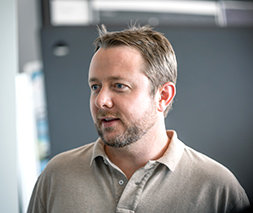
Article
The Design Research Solution: It’s Right Where You Never Looked
An innovative approach to product development that leads to better products and improved time to market. Learn how your designers and engineers can help.
Everyone involved in design research and product marketing has witnessed this scenario: Huge amounts of money are invested in early market research. A detailed product requirements document is created and handed off to the design team with a satisfied smile. There’s a feeling of certainty that this product will be amazing. Everyone agrees the product will fulfill every user need so perfectly that it will crash into the market like a tsunami, washing away all competition. Only nine months later, through a series of seemingly small changes, the product has morphed into an unexciting turd that is barely better than the leading competitor and only for a small subset of the market.
Where did the product development process go so wrong?
How Even the Best Laid Design Research Plans Go Wrong
Problem #1: Stakeholder needs are lost in translation
Traditionally, stakeholder research is conducted by a dedicated team, which usually consists of individuals with marketing, sales, or research backgrounds. The research team’s discoveries must be communicated to the industrial design and engineering (D&E) teams. Many times this hand-off is a singular event conducted at the end of the research phase. It tends to be a “passing of the torch” with no intention of ongoing collaboration between the researchers and D&E. A product requirements document (PRD) is the standard tool used to transfer this information to the next (siloed) team.
The main problem with this approach is that the intent of the requirements often gets lost. The product requirements slowly morph via a game of telephone as the design is transferred from one team to another, further and further away from the initial research. And to compound the issue, this gradual transformation of requirements typically goes unnoticed for a long time. The first red flag may not go up until production-equivalent prototypes are being evaluated with users.
Additionally, a PRD is typically just a list of requirements without any sort of associated weighting or prioritization. When the research team translates market research insights into the PRD, many important user needs are often hidden in a sea of mundane industry standards, cost limitations, and schedule deadlines.
Problem #2: The combination of product requirements is impossible
It’s not hard to come up with the requirements for a winning product. All you need is a product that contains every conceivable function, is intuitive and efficient to use, is ergonomic and lightweight, can be developed quickly, and can be manufactured inexpensively. Well, there’s the answer! No need for further discussion. Except of course it’s impossible to have a product with all of these characteristics. And yet how many times have you seen a PRD with a list of requirements that looks disturbingly similar to the idealistic list above?
Obviously, real product designs require compromises. Researchers occasionally forget—or intentionally ignore—this and fail to adequately prioritize requirements for designers and engineers. When those compromise decisions have to be made, the D&E teams don’t have enough information to make the least detrimental impact on the underlying stakeholder needs.
Problem #3: Designers and engineers think they know best
The hand-off of research insights is not always the problem. Too often, designers and engineers think that they know what the users really want better than the end users themselves. Engineers may willfully ignore stakeholder needs in favor of their own personal preferences. And if we’re being honest, this is something everyone struggles with. It’s challenging to override what we think is best in favor of what the user is telling us he needs.
At least part of this sentiment comes from the separation between D&E and end users. It’s much easier to brush off the product requirements as wrong or nonsensical when you never see or speak to the customer face-to-face.
At this point I predict that someone reading this will stick his finger in the air and say, “Actually, company XYZ ignored user research when designing their product and look how successful it was! Henry Ford, blah blah, ‘faster horse’…” To which I reply: of course there are exceptions, and these exceptions make great stories. However, ignoring stakeholder feedback is an extremely risky way to pursue product development. In reality, 999 times out of 1000 the strategy of “I know better than my end users, so I’m going to ignore the design research” is going to land you with an unsaleable dud.
The Design Research Solution: Don’t Throw Research Over the Wall
The solution to most of these problems is simple: include the industrial designers and engineers in the research process. Don’t allow the research team to toss a PRD over the proverbial wall, dust off their hands, and turn their attention to the next project. Instead, there should be a few consistent team members who are involved from the very beginning and stick with the project as it advances through the development process.
Through many years of product development experience, M3 Design has discovered that the best individuals to be this consistent voice are the designers and engineers. We didn’t just come up with this idea on a whim. In the past, M3 has tried many different research strategies. For several years we even had a dedicated design research team that handled all up-front research activities.
Dedicated researchers are typically empathetic and extremely skilled at extracting latent user needs by asking perceptive questions and noting subtle behavioral cues. However, they often lack the technical background and mindset to turn research insights into realistic next steps.
For example, not too long ago during a new project’s kickoff meeting, our client handed us a list of product requirements generated by their marketing/research team. The requirements described a product that was lightweight, small, intuitive, and simple to adjust without tools, but also expanded to twice its size with 17 individual adjustments for ultimate workflow flexibility. And yet when questions were raised about which of these conflicting requirements was flexible and how each should be weighted during the design process… Crickets and blank stares. Our client hadn’t even considered that the combination of requirements was impossible to make.
The Ideal Researcher Is the Industrial Designer/Engineer
The takeaway here is not that sales and marketing should not be involved in the research. Of course they should be. But the D&E teams need to be included from the very beginning.
This doesn’t imply that every industrial designer/engineer makes a good researcher. Brilliant designers and engineers have an uncanny ability to create beautiful, technologically advanced products. However, many of these individuals often miss the mark when it comes to what the market actually wants. This disconnect often stems from of a lack of empathy; empathy that is required to see outside their own small bubble of personal experience.
In the past we have inherited designs from clients that were incredibly well engineered. It’s been easy to see the hours spent meticulously tweaking every detail, every continuous surface, every carefully considered part line, every manufacturing detail. Unfortunately, many of these designs completely missed the target regarding user needs. None of these awe-inspiring designs resulted in a successful product without a major overhaul.
The best design researchers possess personality traits that make them skilled at both research and design, such as being:
- Inquisitive – they become invested in the problem for its own sake and derive joy from making things better. Many of the best product design researchers are tinkerers and makers by nature.
- Empathetic – they are able to connect with and understand the needs of others.
- Humble – they look beyond their personal preferences so that they can objectively judge design concepts by how well stakeholder needs are fulfilled. They’re not afraid to ask “stupid” questions so that they can get to the bottom of a problem.
- Affable – they have “people skills” and can put an interviewee at ease. Making users feel comfortable during interviews encourages them to behave more naturally and offer more honest feedback.
- Conceptually-minded – they know how to transform user needs into realistic solutions.
- Experienced – product design expertise and experience allows them to dig deeper than a traditional researcher. They ask follow-up questions that will be important in later development phases.
These days M3 doesn’t have any designated “researchers.” Everyone participates in all phases of the process from strategy to development. Getting first-hand experience of what users care about is an integral part of building empathy in our industrial design and engineering teams.
The Most Positive Consequence? Accelerated Time to Market
I can see you rolling your eyes and shaking your head. “So what if my D&E team empathizes with the stakeholders? How does this help me sell more?”
M3 Design has discovered that by using research to instill empathy in designers and engineers, products get to market faster. This is accomplished in two important ways:
- Actionable next steps:
Product designers know what information is critical in the stages following research. Unlike traditional researchers, their development perspective shapes the way they conduct research and also allows them to turn research insights into actionable next steps for themselves (or their client) to pursue in the concept phase. - Avoiding future problems:
Empathy established early on in the strategy phase enables the D&E team to make decisions throughout the entire design process based upon the real stakeholder needs. As a result, formative user testing in later phases will reveal fewer problems and thus require fewer design changes.
The Ultimate Result of the Right Design Research: A Better Product
In addition to accelerating your time to market, building stakeholder empathy in your D&E teams creates better products. The designers and engineers are responsible for transmuting abstract user needs into a concrete solution. Including these individuals in the research activities helps them understand what is really important to end users.
There is a bit of unquantifiable black magic to extracting meaningful insights from stakeholders. Good research doesn’t come from blasting out hundreds of surveys and then tallying the results into a bulleted punch list. Real insights require getting into the head of your stakeholders so that you can answer questions as they would. Knowing the stakeholders well enough to intrinsically understand their needs becomes incredibly important during the concept phase. The empathy established during research enables designers to make “correct” decisions when contemplating design options later on.
This is an important notion because long after initial research has been completed design changes will need to be made for various reasons. These can include improving functionality, reducing cost, improving DFM, and bolstering reliability, among myriad others.
As these inevitable challenges arise late in the product development process, it falls upon the shoulders of the engineers and designers to make the necessary modifications. And if these team members have an instinctual understanding of what is most important to the stakeholders, there is a much better chance that the final product will be something that the market wants.





